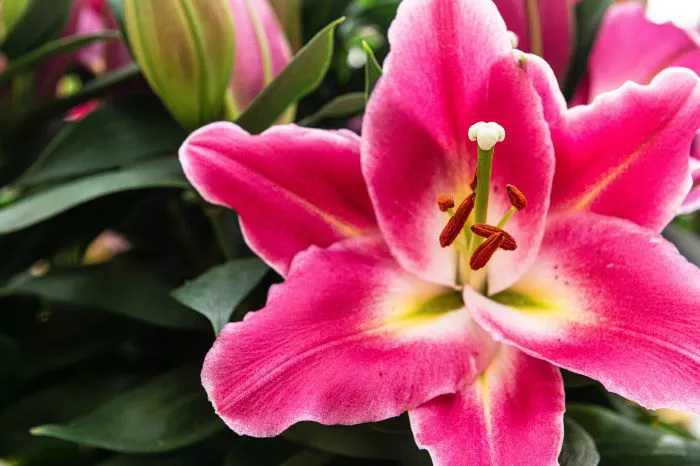Flowers are a cherished gift for many occasions, from celebrations to condolences. When selecting or arranging a bouquet, one common question is how many flowers are typically included. Understanding the quantity of flowers in a bouquet is essential for various reasons, including aesthetics, cost, and the intended message. This article will explore the factors that influence the number of flowers in a bouquet, provide general guidelines, and discuss considerations for different types of arrangements.
Factors Influencing the Number of Flowers in a Bouquet
Several factors can influence how many flowers are included in a bouquet. These factors include the type of bouquet, the size of the arrangement, the type of flowers used, and the occasion for which the bouquet is intended.
The type of bouquet is a primary consideration. A simple hand-tied bouquet may contain fewer flowers than a lavish wedding bouquet. For example, a casual bouquet for a friend might have ten to fifteen stems, while a bridal bouquet can have twenty to fifty stems or more, depending on the desired fullness and design.
The size of the arrangement also plays a significant role. Small bouquets, such as those used for a simple table centerpiece, typically contain fewer flowers. Conversely, larger arrangements designed for significant events or displays will naturally require more flowers to achieve the desired impact.
The type of flowers used in the bouquet can also affect the quantity. Some flowers are larger and denser, such as peonies or hydrangeas. Fewer of these flowers may be needed to create a visually appealing arrangement. In contrast, smaller flowers like daisies or baby’s breath may require a larger number to fill out the bouquet adequately.
The occasion for which the bouquet is intended can also dictate the number of flowers. For instance, a bouquet for a romantic gesture may focus on a few significant blooms, while a bouquet for a celebration may include a larger variety and quantity of flowers to convey festivity.
General Guidelines for Flower Quantities
While the number of flowers in a bouquet can vary widely, there are some general guidelines to consider. A small bouquet, often used for casual gifting or as a simple centerpiece, typically contains about ten to fifteen stems. This quantity provides enough visual interest without overwhelming the space.
Medium-sized bouquets, which might be used for occasions like anniversaries or casual gatherings, generally consist of fifteen to twenty-five stems. These bouquets offer a fuller appearance and can include a mix of flowers and greenery.
Large bouquets, such as those used for weddings or significant events, can contain twenty-five to fifty stems or more. Bridal bouquets, in particular, can be quite elaborate, featuring a combination of various blooms and greenery to create a stunning visual effect.
For special arrangements, such as funeral or sympathy bouquets, the number of flowers may vary based on the desired sentiment. These bouquets often include a mix of larger blooms and supportive greenery, with quantities typically ranging from twenty to forty stems.
Considerations for Specific Types of Bouquets
When considering the number of flowers in a bouquet, it is essential to think about the specific type of arrangement. For example, a hand-tied bouquet may have a different flower count than a structured arrangement in a vase.
Bridal bouquets are often designed to be both beautiful and manageable. Florists take care to balance the weight and size of the bouquet, ensuring that it is comfortable for the bride to hold throughout the ceremony and reception. This often results in a bouquet that has a significant number of stems but is designed to be easy to carry.
In contrast, sympathy bouquets or funeral arrangements may prioritize a more substantial look with fewer types of flowers. These arrangements often convey deep emotions and may include a variety of colors and textures to honor the deceased.
For seasonal arrangements, the number of flowers may also be influenced by availability. During peak seasons, certain flowers may be more abundant, allowing for larger arrangements without significantly increasing costs.
Practical Implications of Flower Quantity
Understanding how many flowers are in a bouquet has practical implications. For example, when budgeting for flowers, knowing the typical flower count can help you estimate costs more accurately. Florists often charge based on the number of stems used, so understanding quantities can aid in making informed decisions.
Additionally, if you are creating your own arrangements, knowing how many flowers to include can help you achieve the desired look. Whether you aim for a minimalist design or a lush, full bouquet, having a clear idea of the flower count will guide your selection process.
The quantity of flowers also affects the overall balance and stability of the arrangement. A well-balanced bouquet will have an even distribution of flowers, ensuring that it stands upright and looks visually appealing.
Conclusion
In conclusion, the number of flowers in a bouquet can vary significantly based on several factors, including the type of bouquet, the size of the arrangement, the type of flowers used, and the occasion. General guidelines suggest that small bouquets contain about ten to fifteen stems, medium bouquets have fifteen to twenty-five stems, and large bouquets can include twenty-five to fifty stems or more.
Understanding the quantity of flowers in a bouquet is essential for practical reasons, such as budgeting and creating visually appealing arrangements. By considering these factors, you can make informed decisions when selecting or arranging flower bouquets. Whether for a special occasion or everyday enjoyment, flowers continue to bring beauty and joy into our lives, and knowing how many to include can enhance your experience.


